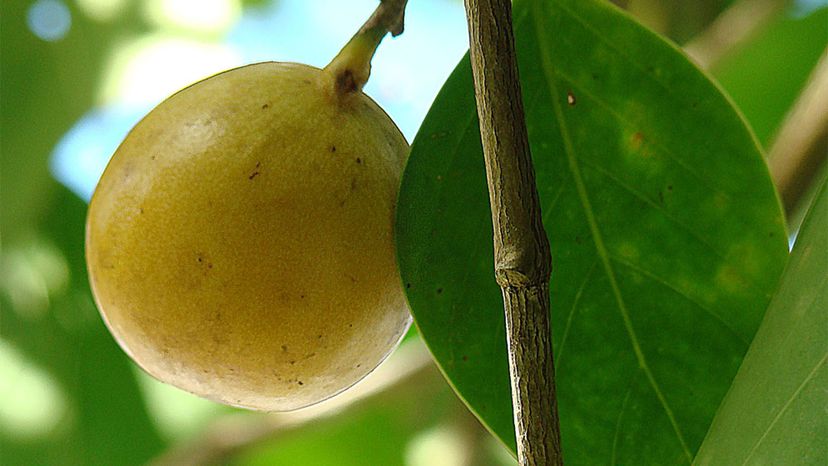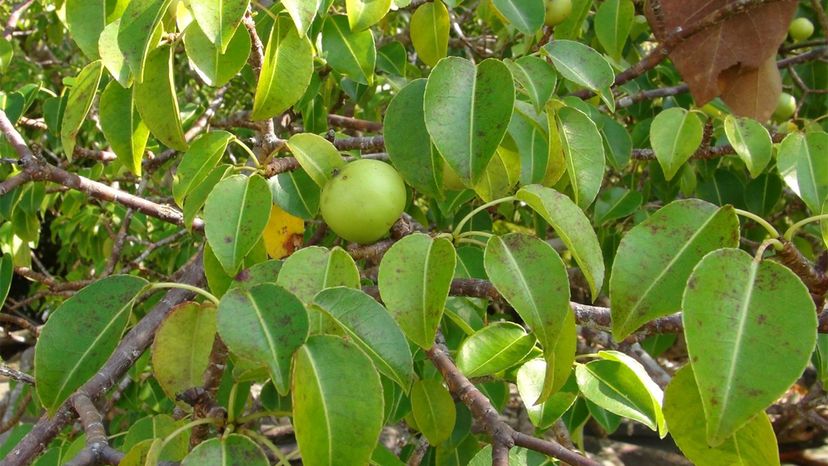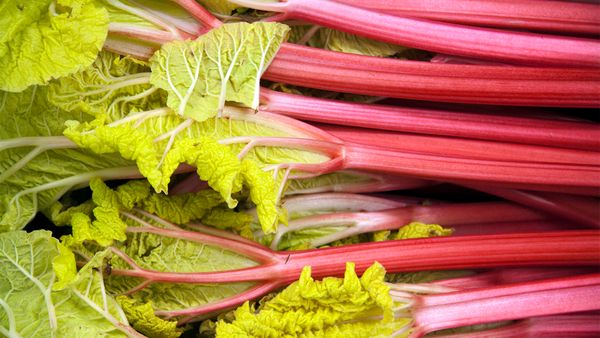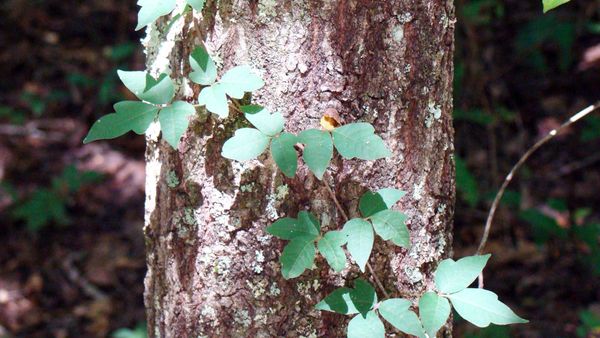The manchineel's small apple-like fruit definitely won't keep the doctor away — it packs such a poisonous punch that the Spanish conquistadors called it the manzanilla de la muerte or little apple of death. This ominous name may sound extreme, but history shows that indigenous peoples used the sap to poison their arrows and contaminate the water supply of the invading Spaniards.
While there are no reported instances in modern botanical literature of anyone dying from ingesting the innocent-looking fruit, if you were to bite into it, the sweet taste would quickly turn quite painful. And we're not talking about the uncomfortable burn of eating a super-hot pepper; the manchineel fruit will cause intense burning and severe swelling of your throat. The area around your mouth may get inflamed and blister, and potentially severe digestive problems can ensue.
Unfortunately, the danger doesn't stop there. Just touching the leaves, even briefly, or using the tree as nature's umbrella during a rainstorm will cause blistering lesions on your skin. And if you get any of the sap — or smoke from burning the wood — in your eyes, you will most likely experience temporary blindness.



